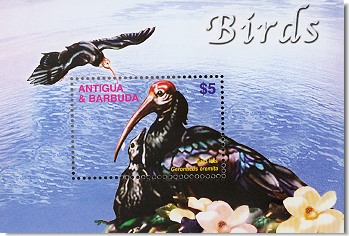The northern bald ibis (Geronticus eremita), also called the hermit ibis or waldrapp, is a migratory bird. The Northern Bald Ibis likes to eat grasshoppers, ants, and other insects. They also eat frogs and snails. Once, the bald ibis lived in the Middle East, northern Africa and southern and central Europe, but due to hunting, loss of habitat and pesticide-use, the birds disappeared from most of these areas and is currently considered Critically Endangered. It became extinct in Europe 300 years ago; the bird is almost gone in Syria, with only a single individual recorded at the country's lone breeding site in 2013; and the only stronghold left is a small population of around 500 birds in Morocco.
But now, a team of scientists from Austria is working to reestablish a self-sustaining, migratory population of bald ibis in Europe. In 2002 Johannes Fritz, who had been a doctoral student in biology at the Konrad Lorenz Research Station in Austria, came up with the idea of taking northern bald ibises from zoos and imprinting them, in effect becoming their foster parent to teach them a new migratory route to Italy. After more than ten years of research and feasibility planning, the Austrian Waldrappteam, together with partners from Germany and Italy (the Parco Natura Viva Garda Zoological Park) received funding from the European Union for a Life+ Project to be held from 2014 to 2019. The aim of the project is to create a European population of at least 120 ibises that migrate autonomously from Germany to Italy.
Experiments conducted in the 1990s demonstrated that ibises raised in the zoos retain their migration instincts, but have no sense of which direction to fly. Because of this, Johannes Fritz decided to teach the ibises to migrate via a road to a World Wildlife Fund (WWF) Oasis in the Tuscan town of Orbetello.
Read more at http://news.mongabay.com/2013/1202-leonardo-northern-ibis.html#FBlecxr6…
http://www.konicaminolta.com/kids/endangered_animals/library/sky/northe…

- Log in to post comments
